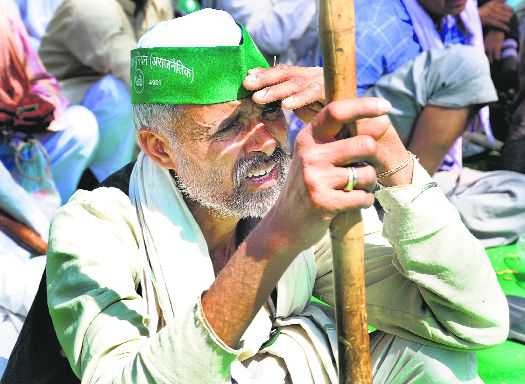
Rajeev Jayaswal in Chandigarh
A farmer’s video went viral on social media in March this year. He was was destroying his ready-to-harvest cauliflower crop because he did not want to sell it for less than Rs 1 per kg. For Premsingh Lakhiram Chauhan, a marginal farmer from Jalna district in Maharashtra, this was a glut-like situation and it was out of frustration that he took this extreme step. Consumers in major towns, however, were willingly paying more than Rs 20 per kg for the same vegetable. Evidently, it was the trader, who was minting money at the cost of the farmer.
Such incidences are common. Recently, after a hard bargain, a farmer of Niphad tehsil in the Nashik district could get a mere Rs 1,064 for 750 kg of onions he produced after spending nearly Rs 75,000. Distraught by the paltry sum, the farmer donated the amount to the Prime Minister’s Relief Fund in protest. The market value of the onions was approximately 10 times the sum that the poor farmer could get.
Then there’s the case of Rajendra Bawake from Sakuri village in the Rahata tehsil of Ahmednagar district. He preferred to destroy his entire brinjal crop after he was compelled to sell the same for 20 paise per kg.
Incidentally, all three cases are from Maharashtra. The situation across the country, however, is no different. Often, such cases are not reported. But, it is true for the entire country that the farmer is unable to get remunerative prices for their crops. The economic distress is reflected in the alarming levels of rural indebtedness, and the above examples are merely pathological manifestations. In extreme cases, some farmers are driven to suicide. In a welfare state, these suicides are nothing but market-induced murders.
Vagaries of market forces are also responsible for environmental degradation, particularly in Punjab and Haryana. Farmers of the region are averse to crop diversification as they feel secure under the politically sensitive minimum support price (MSP) regime that guarantees assured returns for wheat and paddy. Water-intensive paddy, which was introduced in the region during the Green Revolution, has depleted underground water to alarming levels. The free electricity, an electoral gimmick, only adds insult to injury.
The farmer, who feeds the nation, is forced to live in penury because the existing system does not provide him with other avenues of livelihood. Illiterate and underprivileged, farmers and farm labourers in the country are tied to the land and condemned to live in rural areas because most of them are not exposed to the India that thrives on the foodgrains and vegetables supplied by them.
Farmers are the victims of crony capitalism. Take, for example, the recent agitation by sugarcane farmers in Punjab. Thousands of farmers across Doaba and Majha took to the streets, protesting against the state government’s inability to tame about half-a-dozen private sugar mills, who refused to purchase the new sugarcane crop. The idea was to use them to get concessions from the state. The government also wanted an overt excuse to oblige the mill owners.
Often sugarcane farmers are victimised by political parties, particularly in states like Uttar Pradesh, Maharashtra, Karnataka, Haryana and Punjab, where they are among the major vote banks. Before elections, political parties promise them higher rates for their crops. Later, they also announce a state-advised price for sugarcane crops, which is often higher than the fair and remunerative price fixed by the Centre. Such promises, which are incongruous with the economic principles, are often broken, provoking farmers to agitate. The agitation becomes an excuse for the offcials to use public funds for their covert designs. This is particularly true in case of cash-strapped Punjab. The state government is hard placed to tame a small group of private sugarcane mills responsible for creating a hostage-like situation. Millers insist on concessions, subsidies and exemptions before they start their mills in the current crushing season. This unnerves local farmers because this means no buyers for their ready crop and they are unlikely to get their past dues, which have crossed Rs 400 crore. Desperate farmers block highways. Private mills hesitate in offering SAP, citing a glut situation. They know that they would get concessions from the state. And it happened so. As reported in The Tribune, the state government offered to pay about Rs 230 crore to farmers on behalf of the millers.
Illiteracy, crony capitalism, market constraints, middlemen, lack of institutional finance, lack of extension services, poor governance; list of problems faced by the Indian farmer is endless. Enough discussions have taken place in the past seven decades to fathom agrarian crisis in India. There is no need to reinvent the wheel. If the country is really serious about the farmers’ cause, it should act now. There is no one solution for the entire farming community of the country. Each region has its own specific issues. Therefore, farmers’ problems should be addressed in their socio-economic context. For this, policymakers need to prepare region-specific comprehensive action plan and act on it in a time-bound manner.



























